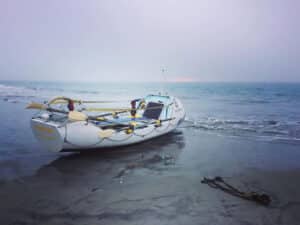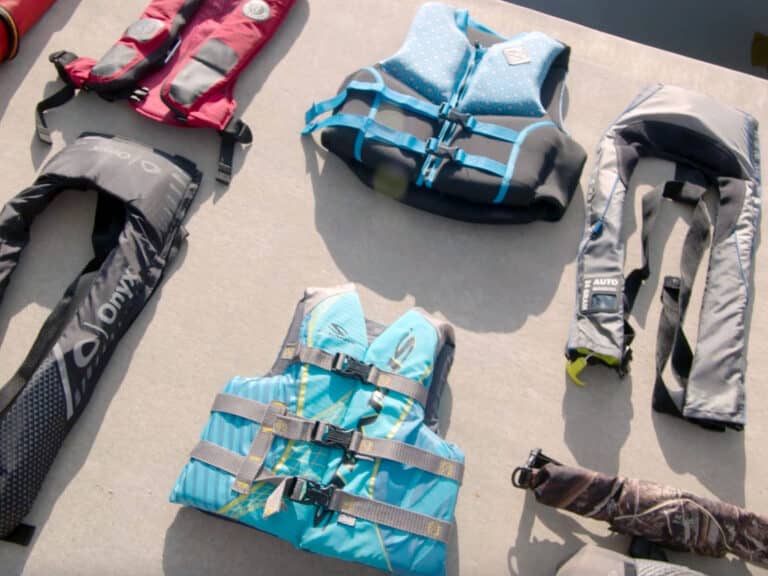
What’s more nightmarish than falling out of a boat you’re driving? Watching it begin circling, seemingly intent on striking you or chopping you up!
Nearly as bad would be watching your empty boat cruise off into the distance.
Those are the scenarios addressed by the red, coiled cord and clip that dangles from a toggle on most boats: an engine cutoff device—what many call a “kill switch.”
The cord clips to your wrist, an item of clothing, or a life jacket (you’re wearing it, of course). If you move more than a couple of feet away from the helm or tiller, the cord pulls loose a clip to immediately stop the engine, quickly stopping the boat.
Simple and mechanical, it’s practically foolproof—if you’re wearing it.
Too many people don’t.
They think it’s a hassle. You need to unclip it to move about the boat to tend a fishing line, or to go forward. It defies the freedom one seeks in boating, they say.
But wearing it frees you from the nightmare above.
There is another option: the wireless lanyard. Like its mechanical cousin, this device cuts power to the engine, but it does it remotely by sensing when the captain goes overboard: Immersion in water, or a distance of 25 to 100 feet from the boat, sends a radio signal to a module to stop the engine and sound an alarm. (Additional fobs on passengers or pets can be programmed to stop-and-alarm or alarm only.)
Each system has its advantages:
The mechanical tether is simple, is always aboard, uses no batteries, and needs no electronic pairing.
The wireless system allows free movement throughout the boat.
Downside? The cord system protects only the driver; the wireless unit doesn’t kick in if the driver is thrown from the helm but remains in the boat.
Your boat or motor likely already has a tether-style engine-cutoff device, even if you’ve too seldom used it. Count on seeing more: The Coast Guard Authorization Act of 2019 expanded the list of boats on which they must be included.
It only takes a wave, wake, sharp turn, collision, steering failure or other issue, and suddenly, a boat’s driver is in the water. With either kind of kill switch, the boat stops and the driver can reboard. Restarting the motor requires only replacing the clip or overriding the signal, depending on the device.
Either beats imagining one’s own boat coming around to attack!
The U.S. Coast Guard is asking all boat owners and operators to help reduce fatalities, injuries, property damage, and associated healthcare costs related to recreational boating accidents by taking personal responsibility for their own safety and the safety of their passengers. Essential steps include: wearing a life jacket at all times and requiring passengers to do the same; never boating under the influence (BUI); successfully completing a boating safety course; and getting a Vessel Safety Check (VSC) annually from local U.S. Coast Guard Auxiliary, United States Power Squadrons®, or your state boating agency’s Vessel Examiners. The U.S. Coast Guard reminds all boaters to “Boat Responsibly!” For more tips on boating safety, visit www.uscgboating.org.








